Written By:
Kayla Murphy
With the accelerated rate of products and services going digital, it’s important for your small business to understand the basic social media metrics. Below, we outline the top 8 metrics you should be tracking.
What are social media metrics?
For every social media goal you have for your business, there is a social media metric to help track that goal. A social media metric or social media KPI is a piece of data that demonstrates your value of social media strategy.
Want to learn more social media tips and tricks for your business? Download our free Social Media Checklist!
For example, if the goal for your social media strategy is to get your brand more visitors to its website, you would turn to your metrics to see if you are hitting your goal or, if not, how you might adjust your plan.
Social Media Metrics You Need to Know
There are four key factors that affect the social media funnel. They are Awareness, Engagement, Conversion, and Consumer. Each of these key funnels will help you as a small business owner establish the connections and goals between your targeted audience and customer engagements.
Below, we will explain each of the four key funnels, and which metrics you should be tracking for each.
Awareness
Awareness refers to your brand awareness among your current and desired audience. Social media awareness can be measured in terms of post reach as well as impressions.
1. Post Reach
Post reach depicts how many users have seen your post since it went live. This one is easy to track and find since it relies on the time you posted at. (If you want to know the best times to post on different social channels, read here.)
To calculate your post reach, simply follow the calculation below:
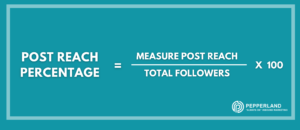
2. Audience Growth Rate
Audience growth rate is how quickly you gain followers. But it’s important to know that when tracking audience growth rate, it’s about how fast you gained new followers, not how many.
To calculate your audience growth rate, simply:
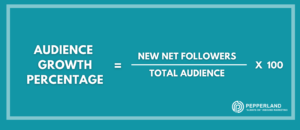
Engagement
In addition to measuring how aware your audience is of your brand, it is also important to measure how engaged they are with your content. The metrics below can help you do just that.
3. Applause Rate
Applause rate focuses on how often your audience indicates approval of your content, for example by liking, favoriting, or sharing your content. Calculating how many “likes” per your account’s followers is crucial in understanding how successful your social media posts are.
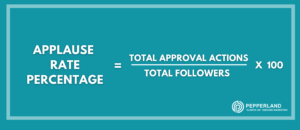
4. Average Engagement Rate
The average engagement rate is the number of engagement actions your post receives relative to your follower count. Engagement actions include likes, shares, and comments.
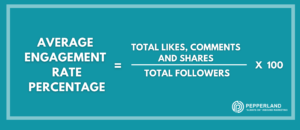
Conversion
Conversion metrics are those concerned with actually converting someone from your social media audience into either a customer or website visitor. These are some of the most important KPIs to understand, as they will indicate whether or not your social media strategy is translating over into any actual increase in business or sales.
5. Cost-per-Click
Cost-per-click is an important metric to pay attention to if you are running paid social ads. The metric essentially tells you how much you had to spend in order to get one person to “click” through to your website after seeing an ad. Understanding your cost-per-click will help you identify which ads are performing well that you can replicate, as well as which ones are not that you might want to consider pausing.
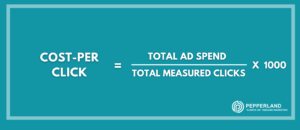
6. Click-Through Rate
Click-through rate, also known as CTR, is how often users click on the call-to-action link on your post. This can range from directing customers to a blog post, a product, a survey, or something else entirely. Tracking your brand’s CTR will give you insight on how compelling your product or company is to your target audience.
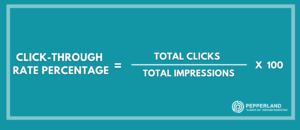
7. Conversion Rate
Conversion rate measures how many people you have actually converted into either a lead or customer. Again, it measures how effective your social strategy or paid ads are in translating to business goals. You should calculate separate conversion rates for each type of conversion your business measures. For example, you might use:
- Subscriber conversion rate to measure the percentage of visitors from social media who subscribe to your newsletter
- Lead conversion rate to measure how many visitors from social media download a content offer or ask to be contacted
- Customer conversion rate to measure how many visitors from social media actually complete a purchase
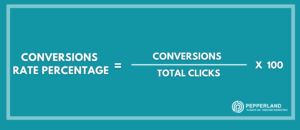
Consumer
Consumer metrics reflect how your customers view your brand. Understanding the connection between your brand and customers is crucial for growing your small business.
8. Customer Testimonials
Customer testimonials are any type of customer review or that you receive. If your brand or product makes someone happy, they’ll most likely want to leave a positive review about their experience. Having positive reviews on your social channels, where possible, will help your brand build a strong reputation. You can measure your customer testimonials by simply seeing how many reviews you’ve received, as well as by calculating the average score.
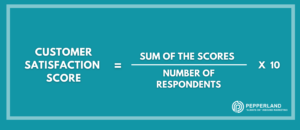
Measuring Your Impact Is a Crucial Part of Reaching Your Goals
In order to understand whether or not your social media strategy is resonating with the audience you are trying to attract, it’s critical that you measure your performance. The KPIs and metrics listed above can help you do exactly that.
Does your social strategy need a boost? At Pepperland, we specialize in inbound and content marketing, and understand how social media can augment and supplement your other marketing efforts. Contact us today to find out how we can help achieve your goals.








